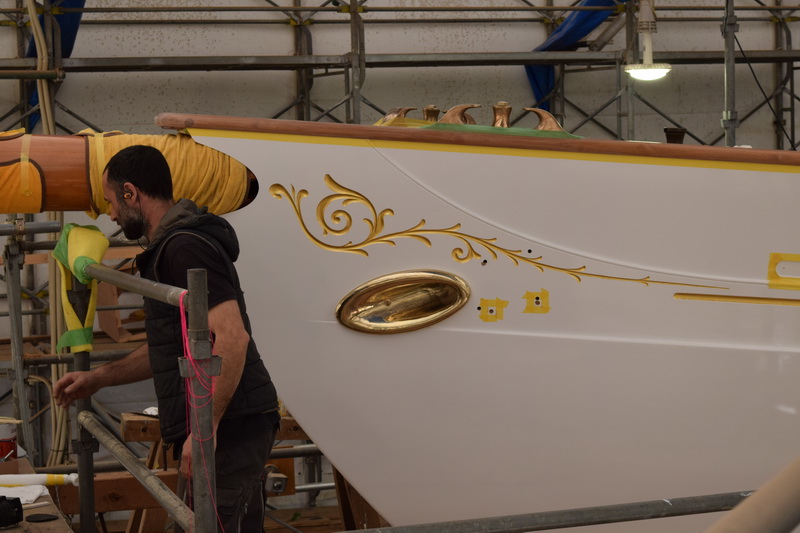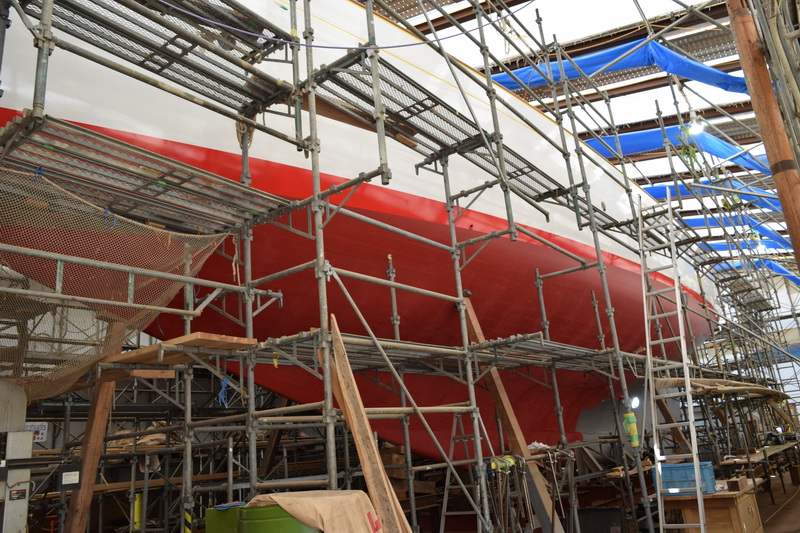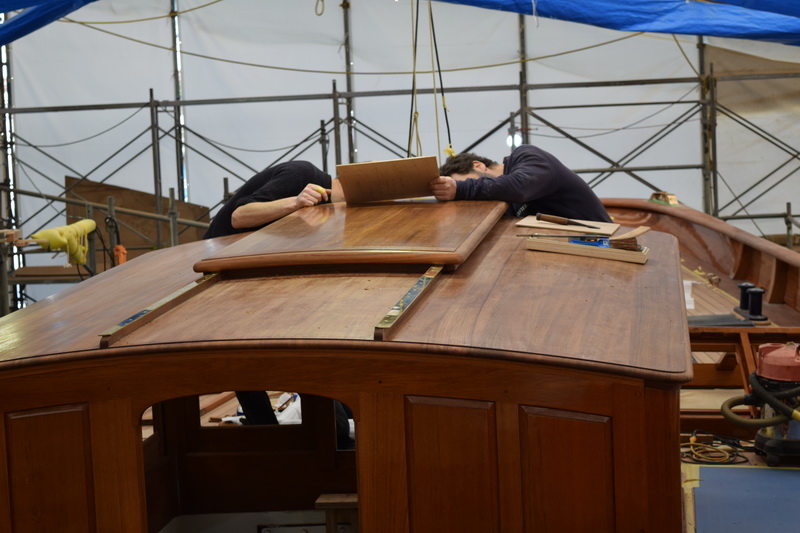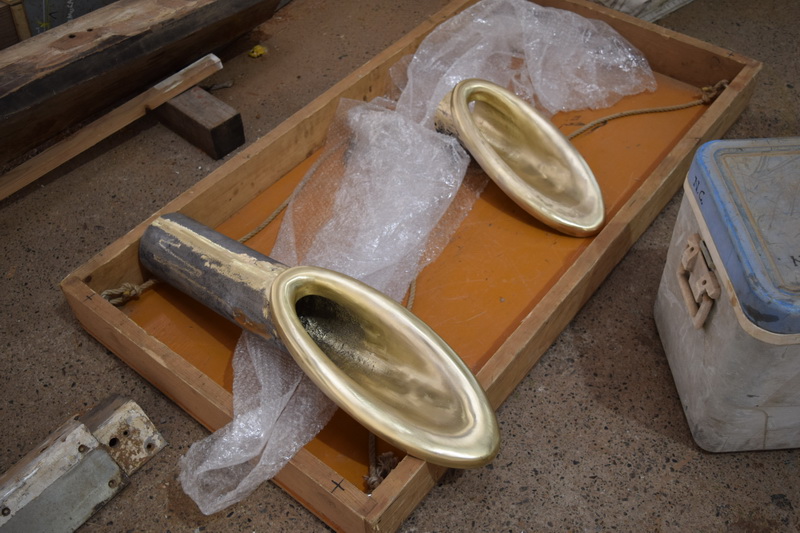The bronze hawse pipes that the anchor chains and hawsers or heavy mooring lines pass through finally arrived. Richard had created a model from vinyl foam, which was sent to a casting expert in the France who created the bronze parts. Some deliveries of material from Europe have been delayed due to problems caused by the coronavirus, but nothing has really interfered with the overall schedule yet. After Richard’s grinding and polishing to get them to fit, they make a nice match just below the gold leaf gilding of the floral carvings at the bow.
The antifouling painting of the bottom also was done this week. The fumes from the cherry red paint, which is applied with rollers, is so toxic that the team needed to wear masks—especially since the painting was being done inside the tent.
On deck, Kakimoto and Mattis installed the hatch runners over the main deck house companionway. These brass runners go with the many other brass parts that ensure the Cynara’s look returns to the classic style of when she was built in the 1920s. Paul and Ms. Takamiya spent hours measuring the dimensions of this and other brass stock, including skylight hardware and door thresholds before ordering. There are still a number of other fittings which have to be installed—such as those that anchor the skylights to their bases on the deck.
Cynara looks stunning now that the scaffolding has been removed. It’s hard to remember what she looked like when she was stripped down to a flexible skeleton a few years back, in preparation for jacking her back into her original shape.

Installed, the elegant new hawse pipes complement the gold leaf of the floral carvings on the bow.

During the application of the first coat of antifoul paint, before the scaffolding was removed.

Paul and Mattis check the operation of the sliding main hatch on the roof of the deck house.


Yes, it’s same boat, with 90 percent of the original hull planks.

Proud team members after the scaffolding was removed.


